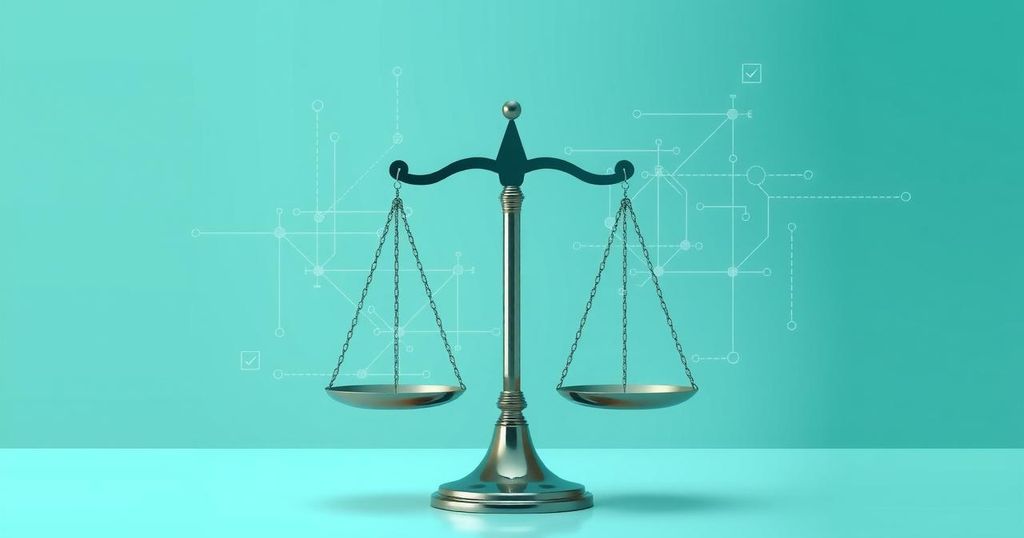Accelerating Gender Equity: The Promise and Perils of AI
The article explores the dual nature of AI in the pursuit of gender equity, highlighting its potential to bridge gaps in employment and education for women while addressing the risks of reinforcing existing biases and online threats. Initiatives and programs are showcased to combat digital harassment and promote women’s involvement in AI, emphasizing collaborative efforts for sustainable change.
The drive for gender equity remains an ongoing global challenge, where progress dances alongside persistent barriers. In particular, women face systemic obstacles across various sectors, especially in education and technology. The rise of artificial intelligence (AI) offers both promising opportunities and potential pitfalls, risking the entrenchment of biases if not judiciously implemented.
AI could play a pivotal role in challenging gender disparities, particularly in workplace inclusion. By utilizing AI in recruitment and promotion, organizations can significantly reduce unconscious biases, yielding decisions that reflect true merit rather than gender stereotypes. This data-driven approach to hiring is designed to foster inclusivity and parity in the workplace.
In educational settings, AI-powered platforms are breaking down barriers to women’s access to quality education by facilitating personalized learning experiences. These adaptive technologies acknowledge individual learning styles, enabling women around the globe to access education that once seemed out of reach. Especially relevant in regions hampered by cultural constraints, AI is redefining educational opportunities for women.
When it comes to healthcare, AI stands to improve diagnostics and personalize treatment approaches specifically for women. Many critical health issues pertaining to women, such as maternal health and reproductive concerns, have received insufficient research attention. AI’s data-analysis capabilities enable the identification of significant health trends and tailored treatment, ensuring women receive appropriate care.
However, AI isn’t a silver bullet; it can also amplify existing gender biases. Research from the Berkeley Haas Center for Equity, Gender, and Leadership reveals that around 44% of 133 reviewed AI systems exhibit some form of gender bias. Such biases can warp hiring practices and even impact loan approval rates negatively for women.
Dr. Atsuko Okuda of ITU stresses that addressing the digital gender divide in Asia Pacific is imperative, particularly for young women. Her advocacy highlights the urgent need for targeted interventions that cater to unique regional needs for achieving sustainable gender equity.
AI’s integration into everyday life carries both risks and rewards for women. While innovative AI solutions combat gender discrimination, rising digital threats, including online harassment and deepfakes, pose new challenges. Nighat Dad’s Digital Rights Foundation in Pakistan illustrates a proactive response to online harassment, facilitating legal assistance for women impacted by digital abuse.
Furthermore, the spread of deepfake technologies—as seen in South Korea—illustrates the vulnerability of women to cyber exploitation. Legal reforms and AI detection tools are essential to protect women’s digital rights as this trend escalates.
Efforts to promote gender-responsive AI are underway, with supportive initiatives like the Asia-Pacific AI School launched by UN Women, aiming to equip women with essential skills for participating in AI development. Similarly, Singapore’s SHE organization pioneered a support center focused on victims of online abuse, showcasing the need for proactive solutions to AI’s risks.
The importance of ongoing awareness is critical as AI continues to morph, potentially amplifying misogynistic narratives and cyberbullying through social media. Governments must enact regulations to combat the misuse of AI technologies effectively while promoting ethical AI practices.
For AI to serve as a catalyst for gender equity, it must be shaped with diverse voices advocating for fair representation. Initiatives encouraging women to pursue careers in tech can help create more just AI systems and fortify equitable technological fields. Moreover, educating the public on AI biases strengthens collective accountability and awareness.
To harness AI as a powerful ally in achieving gender equity, it is crucial to implement diverse representation in its development, enforce necessary regulations, and promote digital literacy. The risks that AI poses must be countered by proactive initiatives aimed at empowering women and ensuring equitable access to AI benefits. By fostering an inclusive, cautious approach to AI, the dream for gender equality can evolve closer to reality.
Original Source: www.telecomreviewasia.com




Post Comment